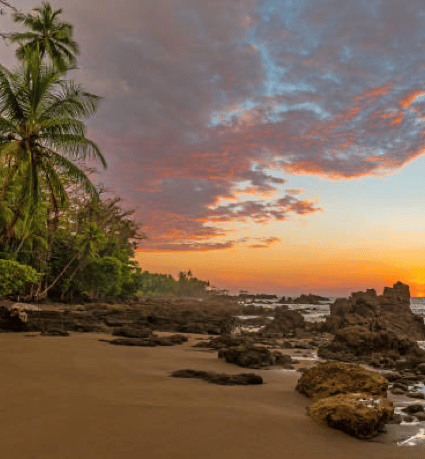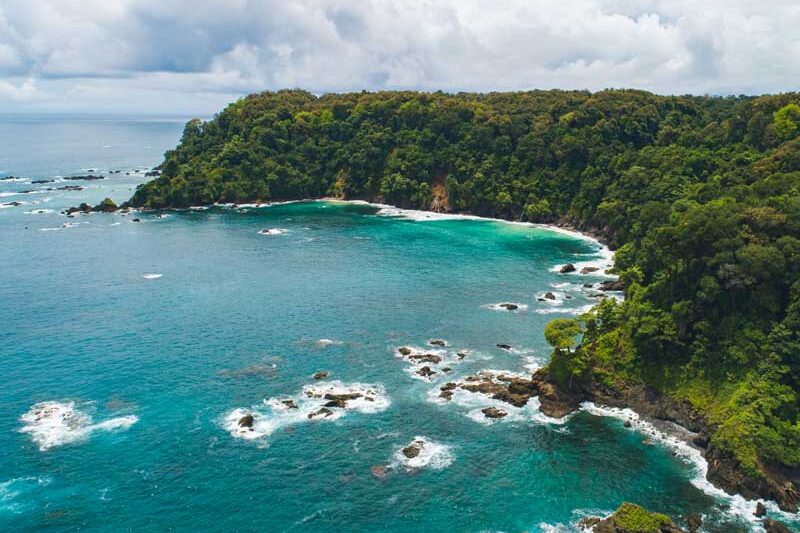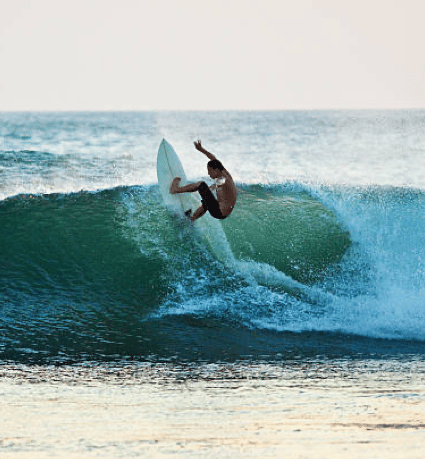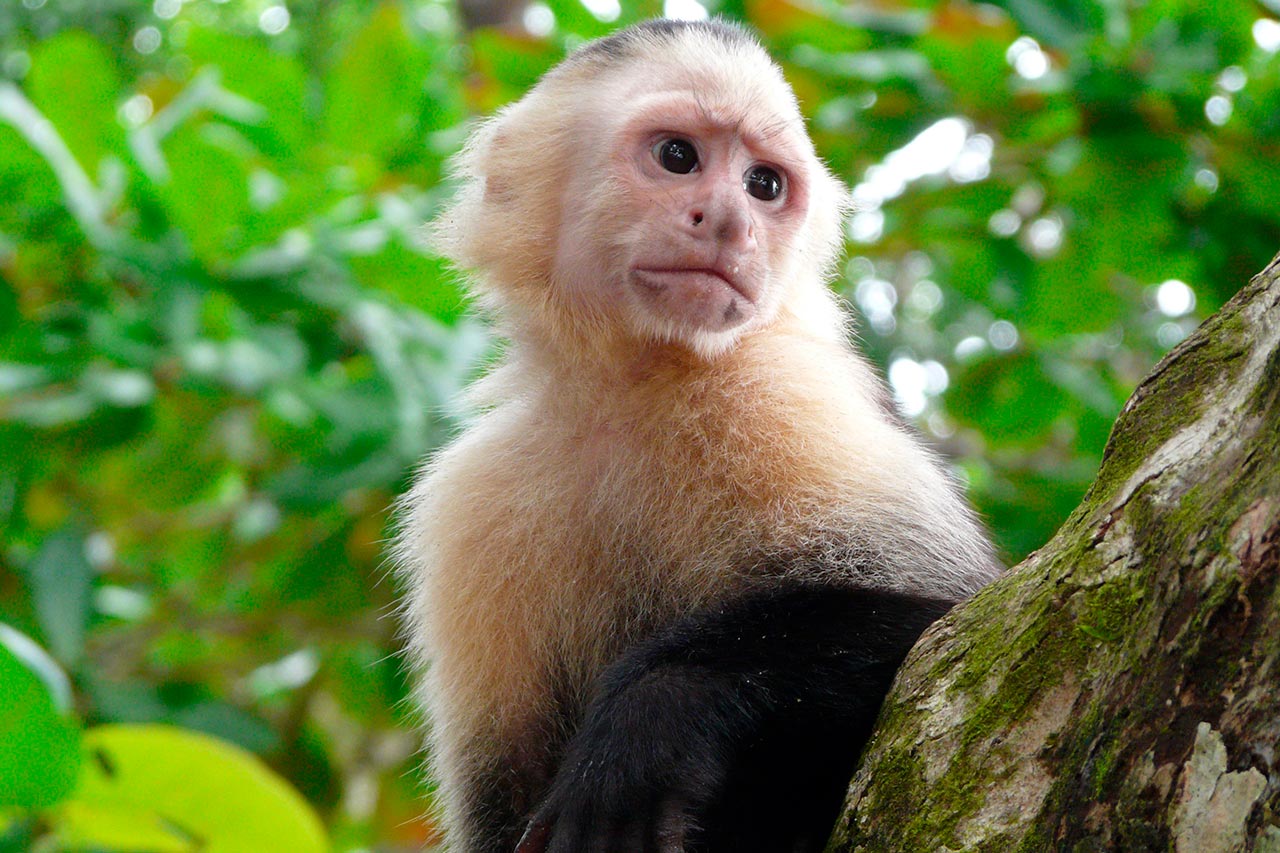Things to Do in Costa Rica’s South Pacific Zone
Explore a national park
In the south Pacific of Costa Rica, you can find Corcovado National Park. This park is home to various wildlife, including jaguars, tapirs, and scarlet macaws. You can take guided hikes through the park or go camping overnight.
Also, you can visit Marino Ballena National Park, known for its gigantic whale-tail-shaped rocky sandbar. Here, you can indulge in activities like snorkeling, diving, and even spotting humpback whales.
Take a trip to a biological reserve
Caño Island is undoubtedly one of Costa Rica’s most beautiful islands, located just northeast of Corcovado, about 20 kilometers west of Costa Rica’s Osa Peninsula. Caño Island has sand beaches and five coral reef platforms, making it a must-see destination.
It’s also a highly significant site for pre-Columbian archaeology in the country. Some of the area’s largest stones were found on this island, and it was used as a burial ground and sacred place by its prehistoric inhabitants.
Take a surfing lesson
The south Pacific of Costa Rica is home to some great surf spots. You can take a surfing lesson from one of the many surf schools in the area.
Nearly deserted beaches line the southern Pacific coast. Many palm trees line the shores, framed by jagged volcanic rocks. The sand has varying shades of gray and almost black tones due to volcanic minerals in the area.
Surf towns like Cabo Matapalo and Pavones are among the most popular in the region. World-class surfers visit both spots.
Go wildlife viewing at the Osa Península
At the southern tip of Costa Rica’s Pacific coast, the Osa Peninsula remains one of the country’s most remote destinations. It is known for its beautiful beaches and remote jungle areas.
This untamed region is home to the largest remaining population of jaguars and tapirs in Costa Rica, as well as a vast expanse of mangroves that make for an enjoyable boat excursion.




What Cities Are in the Southern Zone of Costa Rica?
Drake Bay
Drake Bay is a small town located on the Osa Peninsula known for its beautiful beaches, rich wildlife, and excellent sport fishing. It’s a great starting point for exploring Corcovado National Park and the surrounding rainforest.
Corcovado
Corcovado National Park is one of the most biodiverse places on the planet, with an incredible range of flora and fauna. Visitors to Corcovado National Park can see endangered species like jaguars, tapirs, and scarlet macaws, as well as beautiful beaches and waterfalls.
Cabo Matapalo
Matapalo is a remote, rugged beach town in southern Costa Rica popular with surfers and outdoor enthusiasts. It’s situated near several national parks, including Corcovado and Piedras Blancas National Parks, and offers plenty of opportunities for hiking, bird watching, and other activities.
Puerto Jiménez
Puerto Jimenez, a hub for ecotourism in the south Pacific of Costa Rica, is a town on the Golfo Dulce known for its stunning natural beauty and outdoor activities. Visitors can go fishing, go dolphin watching, or relax on the beach.
Golfito
Golfito is a small port town on the Golfo Dulce, popular with sports fishermen and nature lovers. It’s a great place to explore the nearby national parks and reserves, including Piedras Blancas National Park and Golfo Dulce Forest Reserve.
Sierpe
Sierpe is a beautiful town on the Osa Peninsula. Due to its proximity to Corcovado National Park, it is particularly popular among nature enthusiasts and adventure seekers. The area is ideal for wildlife tours, hiking expeditions, and bird watching excursions.
San Vito
Coffee plantations and lush cloud forests surround the picturesque town of San Vito. It is renowned for its vibrant biodiversity and offers a perfect place for birdwatchers
San Vito has the famous Wilson Botanical Garden. It is a haven for numerous bird species and houses an impressive collection of tropical plants. In the garden, you can observe colorful toucans and hummingbirds and enjoy the surrounding nature’s tranquility.
Golfo Dulce
Golfo Dulce is a captivating destination known for its pristine waters and untouched rainforests. Dolphins, sea turtles, and whales live in the Gulf, making it a great diving and wildlife spot.
There’s also Piedras Blancas National Park, which is home to a huge tropical rainforest and a variety of endangered species. Visiting the area is an ideal way to escape the bustling cities and soak up the natural beauty.
What Is the Weather Like in Costa Rica’s South Pacific Zone?
Generally, the south Pacific region of Costa Rica experiences hot, humid temperatures during the day and cool temperatures at night. There is a lot of rainfall in the region, especially between May and November, which is considered the rainy season.
From December to April, the region experiences a dry season with low rainfall and low humidity. There is still plenty of sunshine during the day, but temperatures can drop at night.
Despite the warm, tropical weather throughout the year, visitors to Costa Rica should be prepared for rainy weather and humidity, especially during the rainy season.
Is Southern Costa Rica Worth Visiting?
Without a doubt, southern Costa Rica is definitely worth visiting! The country offers a unique blend of natural wonders and cultural diversity.
The area has several highlights, including Corcovado National Park, stunning beaches, and the opportunity to see humpback whales during their migration.
There are also many unique wildlife species in the region, including jaguars, pumas, tapirs, and scarlet macaws, along with great hiking opportunities.
Arriving at Juan Santamaría Airport, located just west of San Jose, you can quickly get to the zone by rental car or shuttle service.
Don’t wait any longer. Contact Find My Costa Rica today and let our local experts help plan your trip to southern Costa Rica.
For more details, please get in touch with us at Find My Costa Rica

